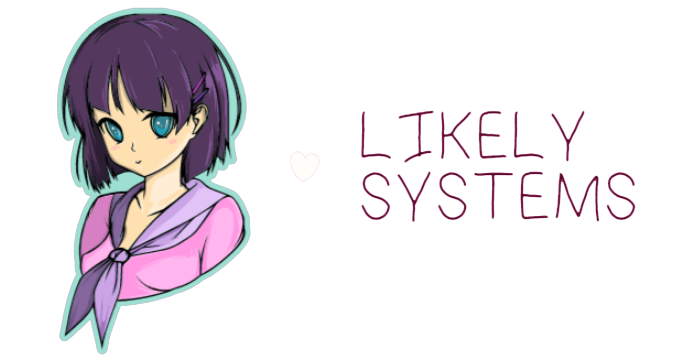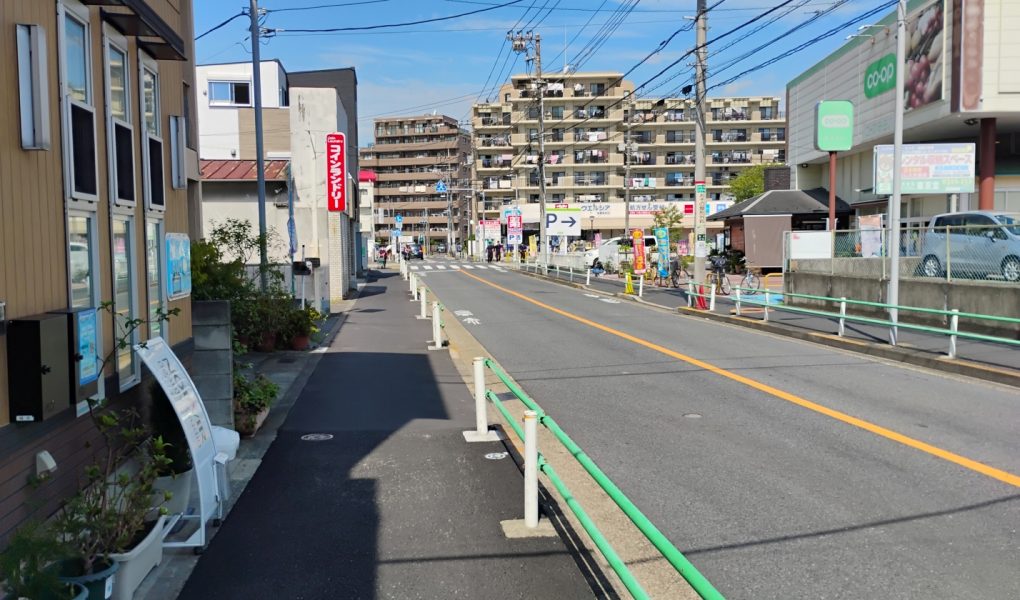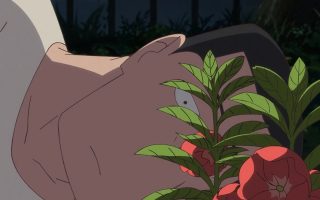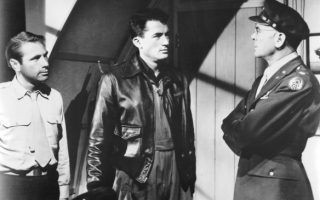I woke around 7am to the loud noise of workmen demolishing the abandoned house next to ours.
Phil came downstairs at ten. So I went upstairs and took a shower. Then the two of us walked northwest for a half hour to the Kameari train station.
We first spotted a golden statue of Ryotsu Kankichi in festival yukata beneath a “Welcome to Kameari” sign.
Phil refused to match Ryotsu’s pose.
The placard next to the statue introduced Ryotsu as the star of Osamu Akimoto’s 1976 manga Kochira Katsushika-ku Kameari Koen Mae Hashutsujo, and provided a summary of the manga’s concept. We spotted another statue of Ryotsu seated on a bench next to the station’s bus stop. I happened to stare down a diagonally connected road and see what looked like a traditional Japanese temple with an escalator outside.
Phil & I used the crosswalks to traverse the station’s bus turnaround and reach the entrance of the train station where we found a trio of color statues of Ryotsu, Keiichi Nakagawa, and Reiko Akimoto. A kind passing Japanese woman offered to snap a photograph of both Phil & I standing with the statues. Phil mentioned that after the 30-minute walk, he wanted to sit and grab a drink. I suggested that we stop at the nearby McDonald’s so he could taste the difference between American and Japanese McD’s. But we first walked through the station to the opposite side. We saw a book & record shop, another Ryotsu statue, a bank of capsule toy machines inside the station wall and a small barn filled with capsule vending machines attached to the side of the station, and another McDonald’s. We entered that restaurant. Phil ordered a double-cheeseburger. I ordered the “Samurai Mac” meal set without realizing that the burger came swathed in a brown sauce that tasted like a mix of shrimp and teriyaki.
We took our food up to the third floor and sat by the window in time to see city workmen arrive to begin replacing the hanging KochiKame banners with new KochiKame banners. I also noticed that our cheerful cashier girl had given me a customer response card on which someone, possibly her, had hand written in English, “Have a good day!!” and drawn a smiley face.
Phil & I left the restaurant, crossed back through the station, and began to walk up the road diagonal to the station. After a few blocks we spotted a narrow, tall building across the street. The building was adorned with manga images of KochiKame. Phil & I realized that the building must be the local KochiKami Museum. The museum’s English language webpage listed requirements to purchase admission tickets that were so restrictive that Phil & I literally couldn’t manage to buy admission tickets.
Just past the museum was an escalator rising to a pedestrian overpass. Across the street lay the Kameari Katori Jinja. So we crossed the street and entered the shrine grounds. I walked over to the reception counter and noticed that the shrine offered three different ema plaques adorned with images of Ryotsu Kankichi for 500 yen each. One tablet featured a large bust of Ryotsu. A second had Ryotsu with what appeared to be a portable shrine. The third depicted Ryotsu with the main building of the Kameari Katori shrine. I decided I wanted that third shrine plaque. So Phil purchased two, one for each of us.
For the walk back, we crossed to the opposite side of the street. As we passed the KochiKame Museum, we stopped to examine a sign that stated same-day admission tickets were available. A guide stepped out of the sliding glass doors and gestured us inside. He explained that we could purchase immediate entry tickets with cash if we wished to. That option hadn’t been offered on the official website. He pointed out that local residents received a 200-yen discount. We agreed to pay the standard 700-yen each admission fee. After we paid, a young lady guide showed us an English-language placard that informed us that an elevator would take us to the fifth floor, and we’d walk down at our leisure. Photographs were allowed, except of the guest illustrator shikishi signboards.
The museum’s fifth floor began with a room filled with vintage toys, a line of all 201 collected volumes of the KochiKame manga, and a second room offering 100-yen KochiKame-themed omikuji. The fourth floor consisted of sample pages of Akimoto’s manga and representative excerpts from the manga. The third floor consisted of interactive exhibits including a simple KochiKame themed video game, a mirror that would display the museum guest as a KochiKame manga style character, and a life-sized Reiko doll that would test the visitor’s attractiveness for Reiko, with an explanation in her voice. The Japanese young couple ahead of us tried. The young man placed his hand on the designated point. The Reiko doll rated him 75. His girlfriend tried and received a 55 rating. I stepped up and earned 125 points from the Reiko doll. The excited young Japanese woman clapped for me. Phil earned a measly 50 point approval rating from Reiko. The second floor housed a 3D recreation of Ryotsu’s messy bed, complete with plastic model kits and video games strewn about and clothes hanging to dry. The floor also had a wall of color shikishi honoring Akimoto, drawn by creators including Eiichiro Oda, Haruichi Furudate, and Koyoharu Gotouge. At the museum’s small gift shop, Phil bought a canvas KochiKame tote bag in which we could carry our shrine tablets.
Me as a KochiKame manga-style panda
We took the Joban line to Nihonbashi station, exiting onto the street just before the entrance to the Imperial Palace garden. I was not eager to go, having been there before and knowing what it was. But Phil was very interested. So we crossed the street then crossed the bridge where we had to allow a security guard to search our tote bag for weapons. We entered an open lot surrounded by tall stone walls. Driving paths branched out to the left and right. Phil walked to the end of the lot before turning to approach the farther-side branch road. Unlike the nearer one that had appeared flat, this one had a noticeable incline. So Phil & I struggled up it until we reached the flat, open space on which sat, at the far end, the stone base of the original Edo castle. At that point Phil reached the realization that the Imperial Gardens had a name far more grandiose than the public park actually lived-up to.
So we headed out of the gate behind the foundation of the castle, then crossed the bridge to the sidewalk. Google Maps appears to have a difficult time navigating the density of Tokyo. Google Maps told us the cross the street then turn left. After several blocks against the river bank, Phil’s cell phone insisted that we’d gone the wrong way. So we backtracked to take the other left-hand street. This one led us across another street and into the Jimbocho book town district.
As we passed by a tall building, signage in the windows caught my eye. Then I realized that the building was the Shogakukan publishing headquarters building. We stopped and quickly toured through the lobby’s display of the manga titles Shogakukan publishes.
We then realized that the Shogakukan headquarters building is next-door to the Shueisha Publishing headquarters building.
Phil informed me that his knee was beginning to ache, so he needed a break and a drink. I spotted a Sanuki Udon Hanamaru cafeteria-style restaurant and suggested we go there. We entered, and Phil began to take a seat at the counter opposite the kitchen. But one of the cooks waved us away. I realized that he was telling Phil to sit at one of the tables at the back of the restaurant. I grabbed a plate and added a piece of karaage, a large fried shrimp, and a fried chicken patty. One of the kitchen staff directed me to select a soup. He seemed nearly insulted when I informed him that I didn’t want soup. He told the elderly lady cashier that I had refused soup. I slid my tray to her. She asked me again if I wanted a soup. I said no. She asked me if I wanted only the three pieces of fried meat on my plate. I said yes. So she charged me appropriately, and I paid. I ate and drank water while Phil rested his knee.
After we left Hanamaru, we first looked for and found the Kanke Shobo bookstore. However, the sign on the door said that the owner was on vacation, so the store was closed.
Diagonally across the street, we walked up three flights of stairs to the exceptionally tiny and cramped Kudan Shobo.
The store was essentially one tiny room with bookshelves along the walls and one in the center, with its top facing the owner’s desk. The store seemed to be stocked with a selection of vintage doujinshi about otaku subculture and 80’s anime including Minky Momo, Gundam, and Creamy Mami, and vintage shoujo manga. When I asked the owner for anything Dirty Pair, he ushered us out of the way, left the store to rummage in another space outside, then came back to inform me that he had nothing to offer. So I thanked him for his effort and complimented his amazing collection, and we departed. Google told us that the Nagashima Shoten store was closed permanently. So Phil & I made our way back the way we’d come, across the street from the Hanamaru restaurant, to find the Bunken Rock Side bookstore, which carried a large selection of rock & roll magazines & fanzines, a fair selection of older manga tankouban, artbooks, and magazines, a moderate selection of older Japanese movie programs, and a large selection of vintage Japanese celebrity and idol magazines. I was most surprised to find an Uchuu Shonen Papi episode script for 7,000 yen. I didn’t buy anything, though. Just a few doors past Bunken Rock Side was another small bookstore focused on manga that also had a small selection of Dragon Ball production cells and slightly more Sailor Moon production cels and remarkably affordable prices. Good production cels of Trunks and Bulma cost under $300 US dollars. Lesser cels of Sailor Venus and Sailor Mercury cost under $200 US dollars.
We then walked about five minutes away to reach Book Dash. Phil waited outside while I browsed the store. I was hoping to find the October 1983 issue of Lemon People magazine. The store had the June, November, and December issues, but not the October issue.
At that point, Phil decided that he could stand no more and needed to return to our abode for a rest. So I left Phil with the KochiKame tote bag, and he headed back to Aoto. I made my way to the Yumeno Shoten bookstore. There I found the Shounen Ryu magazine that contained the second chapter of Yoshikazu Yasuhiko’s Arion manga, but the magazine containing the first chapter was not there. Likewise I found the 1973 issue of Weekly Shonen Champion magazine that contained the second appearance of Go Nagai’s Cutie Honey, but the prior issue with the first appearance was not present. The store had a pile of production cels, mostly of unidentifiable background characters, for a mere 100 yen each. The pile also included an extra-large size cel and douga of Professor Waxman from the Dirty Pair movie, an excellent cell of an irrelevant character, priced at 11,000 yen.
I took the Mita subway line to Suidobashi. Just outside the Suidobashi station, Phil called to tell me that he couldn’t unlock our house door. The punch-in code wasn’t working.
I walked down the road to the Jump Shop. A vinyl Dandadan Turbo Baba manekineko caught my eye, but its relatively small size made its 5500 yen price seem unreasonable.
I walked back to the station and took the Chuo line to Shinjkuku where I wandered through the evening crowds. By pure coincidence I found myself again at the Marui Annex building. So I entered and rode the escalator up to the fifth floor. I browsed around Suruga-ya but didn’t find anything that I felt compelled to buy.
I took the escalator up to the sixth floor and found the Haikyuu pop-up shop. By that time, 8pm was approaching, and the store staff was preparing to close. I stopped in at the Shinjuku Kotobukiya Books store and went up to the eighth floor, where the store kept artbooks. I asked about the Hitsugi Katsugi no Kuro Illustrations book and was told that the store didn’t have it.
Phil informed me via text message that he’d successfully reset the rental house’s door lock and gotten into the house.
I immersed myself in the beating heart of Tokyo, underneath a flood of lights, for two hours, passing from West Shinjuku eventually into Kabukichou, and eventually all the way to Okubo, west of Shinjuku. From Okubo I took the Chuo line again to Akihabara where I switched to the Yamanote line north to Nippori. I anticipated that Nippori would be a large enough city that I’d easily find a convenient restaurant to eat dinner at. About a quarter-mile from the station I found a small restaurant that appeared to be not overcrowded. I tried to feed a 1,000 yen bill into the restaurant’s ticketing machine, but the money got rejected. I tried again then tried with a 5,000 yen bill. That too got returned. Then I noticed a notice taped to the machine that stated that the machine wouldn’t accept the country’s newer, redesigned paper bills.
So I gave up on trying to find a restaurant around the east side of Nippori and walked back through the station to the west exit. However, I found that the west side of the station was entirely darkened residential area. So I returned to the station. However, the paired gate for the Keisei line and Narita Airport Skyliner train line was already closed for the night. So in my desperation, I decided to take a chance with the ”Ordinary Train” line, which turned out to be the Keisei line with a different name.
Mitsuru Adachi’s “Touch” used to advertise “touch to pay”
I got off the train in Aoto and stopped at the Nikumen Ramen restaurant where I ordered a Coke, a bowl of rice topped with chunks of chicken and chives, and a side-order of six gyoza. The meal was a very affordable 780 yen, but it was also small enough that I needed to stop at the 7-11 across from the rental house to buy an additional bowl of curry & rice and a piece of chocolate cake. I heated the rice bowl at the rental house and chatted with Phil before he went to sleep for the evening.




